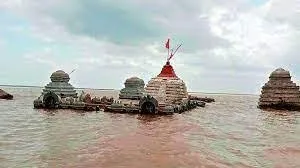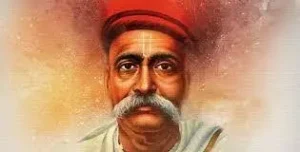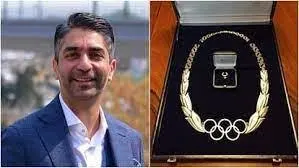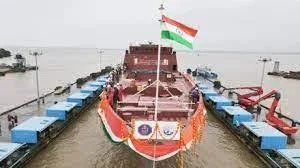UPSC GS 1
Death Valley
- News: A man was hospitalized after burning his feet on blistering sand dunes at Death Valley National Park.
- Location and Overview:
-
- Death Valley is a desert valley situated in the southeastern part of California, United States.
- It is renowned for being the lowest, hottest, and driest part of the North American continent.
- Covering an area of approximately 7,800 square kilometers, about 1,425 square kilometers of the valley’s floor is below sea level.
-
- Geological Formation:
-
- Death Valley is a rift valley or graben, formed by the sinking of a large expanse of rock between major block-faulted mountains running parallel to each other in the east and west.
- It lies within the Great Basin, to the east of the Sierra Nevada Mountains, and is part of the northern Mojave Desert.
-

- Boundaries:
-
- The valley is bordered by the Grapevine, Funeral, and Black Mountains of the Amargosa Range to the east, and the Panamint and Cottonwood Mountains of the Panamint Range to the west.
-
- Landscape Features:
-
- Death Valley features a diverse range of landscapes, including mountain peaks, canyons, sand dunes, salt flats, badlands, and volcanic craters.
- Portions of the great salt pan on the valley’s floor are among the lowest land areas in the Americas.
-
- Notable Points:
-
- Badwater Basin: Located in the heart of Death Valley National Park, Badwater Basin is the lowest point in North America.
- Telescope Peak: The highest point in Death Valley, Telescope Peak stands at 3,366 meters (11,043 feet) and is situated in the Panamint Range.
- Protection and Conservation: Death Valley constitutes a significant part of Death Valley National Park and is included in the Mojave and Colorado Deserts Biosphere Reserve, highlighting its importance in ecological and environmental conservation.
-
Sangameswara Temple
- News: The Sangameshwara Swamy temple, a revered Saivite shrine, has entered its annual period of submergence.
- About Sangameswara Temple
-
- Sangameswara Temple is a Hindu temple dedicated to Lord Shiva, located in the Nandyal district of Andhra Pradesh.
- Situated on the bank of the Krishna River, the temple is historically significant and showcases architectural brilliance from the Chalukya period.
-
- History
-
- The temple was originally constructed in 740 AD by the Chalukya ruler Pulakesi II.
- It was initially located at the confluence of the Tungabhadra and Krishna Rivers, approximately 10 km away from its current location.
- In 1979, the temple was dismantled and relocated stone-by-stone to its present site due to the original location being submerged by the construction of the Srisailam Dam.
-

- Features
-
- The Sangameswara Temple is built in the Nagara style and is set on an elevated platform surrounded by a fortified wall.
- The temple complex includes a large hall with 12 pillars, leading to the sanctum.
- A circumambulatory path, or pradakshina path, encircles the sanctum, allowing devotees to perform religious rituals.
- The ceiling of the temple features a prominent relief of Nagaraja, a common motif in Chalukya temples.
- The pillars within the hall are intricately engraved with images of deities such as Lord Vishnu, Brahma, Kumaraswamy, and celestial couples.
- Additionally, all four corners of the temple are adorned with carvings of crocodiles, adding to its unique architectural charm.
-
Read also: A List of Major Freedom Fighters of India (1857-1947)
Kargil Vijay Diwas
- News: PM Modi has paid homage to Kargil war martyrs.
- Date and Observance:
-
- Kargil Vijay Diwas is celebrated every year on July 26.
- July 26 2024 will be marking the 25th anniversary of India’s victory in the Kargil War.
-
- Significance and Commemoration:
-
- Kargil Vijay Diwas is dedicated to honoring the bravery of Indian soldiers who fought and sacrificed their lives during the Kargil War of 1999.
- The day also commemorates India’s victory over Pakistan and marks the successful completion of Operation Vijay.
- This operation involved reclaiming territories in the Kargil district of Jammu and Kashmir that had been occupied by Pakistani soldiers and militants.
-
- Historical Context:
-
- The origins of Kargil Vijay Diwas are linked to the ongoing conflicts between India and Pakistan.
- Following the 1971 war, which led to the creation of Bangladesh from East Pakistan, the two nations continued to have tensions.
- They clashed over various issues, including the Siachen Glacier and nuclear testing in 1998, which exacerbated their animosity.
- In response to these ongoing tensions, the Lahore Declaration was signed in February 1999.
- This agreement aimed to resolve the Kashmir issue through a bilateral peaceful settlement, setting the stage for the events of the Kargil War and ultimately leading to the operation that the Vijay Diwas commemorates.
-
Lokmanya Tilak
- News: The Prime Minister, Shri Narendra Modi recently paid tributes to Lokmanya Tilak on his birth anniversary.
- Introduction
-
- Bal Gangadhar Tilak, widely known as Lokmanya Tilak, was a prominent Indian nationalist, freedom fighter, social reformer, and political leader during the Indian independence movement.
- Often hailed as one of the chief architects of modern India, Tilak was a fervent advocate for Swaraj, or Self Rule for India.
- His famous slogan, “Swaraj is my birthright, and I shall have it,” embodies his relentless quest for India’s independence.
-

- Early Life and Name
-
- Born Keshav Gangadhar Tilak, he was later honored with the title ‘Lokmanya,’ meaning “he who is revered by the people.”
- This title reflects his deep connection with the masses and his significant impact on the Indian nationalist movement.
-
- Political Philosophy
-
- Tilak was considered a radical nationalist and was labeled by the British Government as the “Father of Indian Unrest.”
- He was known for his strong stance on self-rule and his assertive methods of political activism.
-
- Organizations:
-
- Indian National Congress: Tilak joined the Indian National Congress Party in 1890, becoming a key figure in its early years.
- All India Home Rule League: In 1916-18, he co-founded the All India Home Rule League with G. S. Khaparde and Annie Besant.
- This league was instrumental in advocating for self-rule and raising public awareness about India’s right to govern itself.
- While Tilak’s league was active in Maharashtra, Central Provinces, Karnataka, and Berar, Besant’s league worked throughout the rest of India.
-
- Literary Works:
-
- Tilak was a prolific writer and journalist, using his newspapers, Kesari (meaning Lion) in Marathi and later Maratha in English, to promote nationalist ideas. Notable works include:
- “The Arctic Home in the Vedas“: In this book, Tilak proposed the theory that the Vedas originated in the Arctic region.
- “Shrimad Bhagavad Gita Rahasya“: An interpretation of the Bhagavad Gita from a nationalist perspective, reflecting his deep engagement with both spirituality and politics.
-
- Educationist
-
- Tilak was a strong advocate for education and played a crucial role in establishing the Deccan Education Society in Pune in 1884.
- The society founded Fergusson College and the New English School, which were pivotal in promoting modern education in Maharashtra.
- Tilak also taught mathematics at Fergusson College.
-
- Social Reforms
-
- In addition to his political activism, Tilak supported social reform by working to eradicate social evils such as untouchability and child marriage and by promoting education for women.
-
- Lal-Bal-Pal Triumvirate
-
- Tilak was part of the influential political trio known as the ‘Lal-Bal-Pal triumvirate,’ which included Bipin Chandra Pal and Lala Lajpat Rai.
- Together, they played a significant role in shaping the early nationalist movement in India.
-
- Imprisonments
-
- Tilak faced multiple imprisonments for his seditious activities.
- His most extended incarceration lasted from 1908 to 1914.
- During this period, he wrote his renowned book “Gita Rahasya” (The Secret of the Bhagavad Gita).
- In 1916, he played a key role in concluding the Lucknow Pact with Mohammed Ali Jinnah, which aimed to foster Hindu-Muslim unity in the nationalist struggle.
-
UPSC GS 2
Olympic Order
- News: Abhinav Bindra has been conferred with the Olympic Order for his outstanding services to the Olympic movement.
- Overview:
-
- The Olympic Order is the highest award given by the International Olympic Committee (IOC) for outstanding contributions to the Olympic Movement.
- Established in 1975, it replaced the Olympic Diploma of Merit and is awarded to individuals who have made exceptional contributions to sport or provided significant services to the Olympic Movement.
-
- Grades:
-
- The Olympic Order is awarded in three grades: gold, silver, and bronze.
- The gold order is reserved for heads of state and is given in exceptional circumstances.
- The silver and bronze orders recognize other significant contributions.
-
- Insignia:
-
- Design: The insignia of the Olympic Order features a collar or chain adorned with the five Olympic rings and the kotinos emblem, which is an olive wreath.
- Lapel Badge: Recipients also receive a lapel badge corresponding to the grade of the award they have been given.
-

- Significance:
-
- The Olympic Order symbolizes recognition for individuals who have made substantial contributions to the Olympic Movement.
- It celebrates the ideals of unity, friendship, and fair play central to the Olympic Games.
- The award reflects the IOC’s commitment to honoring those who have advanced the cause of sport and the Olympic Movement on a global scale.
-
- International Olympic Committee (IOC):
-
- The International Olympic Committee is a non-governmental sports organisation based in Lausanne, Switzerland.
- Founded in 1894 by Pierre de Coubertin and Demetrios Vikelas, it is the authority responsible for organising the modern Olympic Games.
-
UPSC GS 3
INS Triput
- News: INS Triput, the first of two Advanced Frigates, under construction by the Goa Shipyard Limited (GSL) for the Indian Navy, was launched recently at GSL, Goa.
- About INS Triput
-
- INS Triput is the first indigenously built Talwar-class frigate, marking a significant milestone in India’s naval capabilities.
-
- Project Background
-
- In October 2016, India and Russia signed a deal to acquire four stealth frigates of the Admiral Grigorovich class, also known as Project 1135.6 class.
- This deal includes two frigates to be directly imported and two frigates to be built in India by Goa Shipyard Limited (GSL) through a transfer of technology (ToT).
- INS Triput is the first frigate constructed under this deal, with the second frigate, INS Tamal, expected to be delivered by February 2025.
- The Indian Navy already operates six ships of this class, including INS Talwar, INS Trishul, INS Tabar, INS Teg, INS Tarkash, and INS Trikand.
-

- Specifications and Features
-
- The ship measures 124 meters in length and 15.5 meters in width.
- It is powered by four gas turbines, allowing it to achieve a maximum speed of 28 knots with a displacement of approximately 3,200 tons.
- INS Triput features a hull design that minimizes its radar cross-section, enhancing its stealth capabilities.
- The frigate is equipped with a sophisticated array of weapons and sensors, including an Integrated Platform and Bridge Management System.
- Its air defense capabilities are supported by a vertical launch long-range surface-to-air missile system designed to counter enemy aircraft and anti-ship cruise missiles.
- Additionally, the ship boasts various indigenous systems, such as power generation and distribution, air conditioning, steering, and stabilizers, all developed by private industry.
- It is armed with Russian-made Klub-N anti-ship missiles and can also be equipped with BrahMos supersonic cruise missiles, providing it with formidable offensive capabilities.
-
See more: Foundation Course For IAS/IPS/UPSC: The Ultimate Guide
Greenium
- News: In a first, the Reserve Bank of India (RBI) cancelled the auction of 10-year green bonds as traders refused to pay greenium.
- Overview
-
- The greenium refers to the premium or savings associated with green bonds, highlighting the difference in yield compared to conventional bonds.
- Greenium, or green-premium, is the reduction in the yield on a green bond compared to a conventional bond.
- It reflects the savings an issuer realizes on the coupon payment due to the bond being categorized as green.
-

- Green Bonds:
-
- These are debt instruments specifically used to fund projects or activities considered ‘green’ under national or international taxonomies.
- Such projects may include renewable energy initiatives, electric buses, and energy efficiency programs.
-
- Mechanism:
-
- The concept of greenium operates on the principle that investors, drawn to the sustainability aspect of green bonds, are willing to accept lower returns or yields compared to conventional bonds.
- This is because green bonds attract a dedicated investor base that prioritizes environmental impact over higher financial returns.
-
- Investor Appeal:
-
- Green bonds often come with long-term projects that are seen as reducing both physical and financial risks.
- As a result, investors may accept lower yields, making these projects financially attractive for issuers while supporting sustainability goals.
- In summary, the greenium represents the trade-off between financial returns and the appeal of investing in environmentally beneficial projects.
-
Green Climate Fund
- News: The Small Industries Development Bank of India announced that the Green Climate Fund (GCF) has approved a USD 215.6 million loan facility for implementing the Financing Mitigation and Adaptation Projects (FMAP) in Indian MSMEs.
- About Green Climate Fund
- Definition:
-
- The Green Climate Fund (GCF) is the world’s largest dedicated climate fund, established at COP 16 in Cancun in 2010.
- It operates as an entity of the financial mechanism under the United Nations Framework Convention on Climate Change (UNFCCC).
-
- Aim:
-
- The GCF aims to accelerate transformative climate action in developing countries through a country-owned partnership approach and by employing flexible financing solutions and climate investment expertise.
- The GCF is a legally independent institution with a fully independent secretariat, which is headed by an Executive Secretary.
-
- Secretariat: Songdo, South Korea
- Financing Mitigation and Adaptation Project (FMAP):
-
- Definition: The Financing Mitigation and Adaptation Project (FMAP) is a significant initiative under the GCF designed to promote low-emission, climate-resilient technologies. Key aspects of the FMAP include:
- Concessional Loans: The project plans to provide nearly 10,000 concessional loans to micro, small, and medium enterprises (MSMEs) to support the adoption of technologies that reduce emissions and enhance climate resilience.
- Expected Impact: The FMAP is projected to lead to a reduction in greenhouse gas emissions amounting to 35.3 million tonnes.
- Previous Projects: This is the second GCF-approved project led by the Small Industries Development Bank of India (SIDBI). The first project, the Avaana Sustainability Fund, focuses on helping startups access climate finance to support their sustainability efforts.
-
Angel Tax
- News: Finance Minister Nirmala Sitharaman announced the government will abolish the ‘angel tax’ in her Budget 2024 presentation, providing a boost to both angel investors and startups.
- Angel Investor: An angel investor provides initial seed money for startup businesses, usually in exchange for ownership equity in the company.
- Angel Tax: It is levied when an unlisted company issues shares to an angel investor at a price higher than its fair market value (FMV).
- FMV: The fair market value represents what a single share of stock would be worth on the open market.
- Need: The Central Government introduced the angel tax in Finance Act, 2012 to curb money laundering and make it easier for businesses to comply with the tax norms.
- Rate: The angel tax is imposed at 30.9% if the amount invested exceeds the startup’s FMV.

- Eligibility and Regulations for Startups and Angel Investors:
-
- Eligible Startups: To qualify as an eligible startup, a company must be recognized by the Department for Promotion of Industry and Internal Trade (DPIIT). This recognition is crucial for startups to avail various benefits and incentives.
- Capital Limit: The aggregate amount of paid-up share capital and share premium for a startup cannot exceed ₹25 crores. However, this cap does not include funds raised from Non-Resident Indians (NRIs), Venture Capital Firms, and specified companies, which are exempt from this limit.
- Angel Investors: Angel investors are eligible for a 100% tax exemption on investments that exceed the fair market value. To qualify for this exemption, the investor must meet the following criteria:
- A net worth of ₹2 crores.
- An income exceeding ₹25 lakh in each of the past 3 fiscal years.
-

